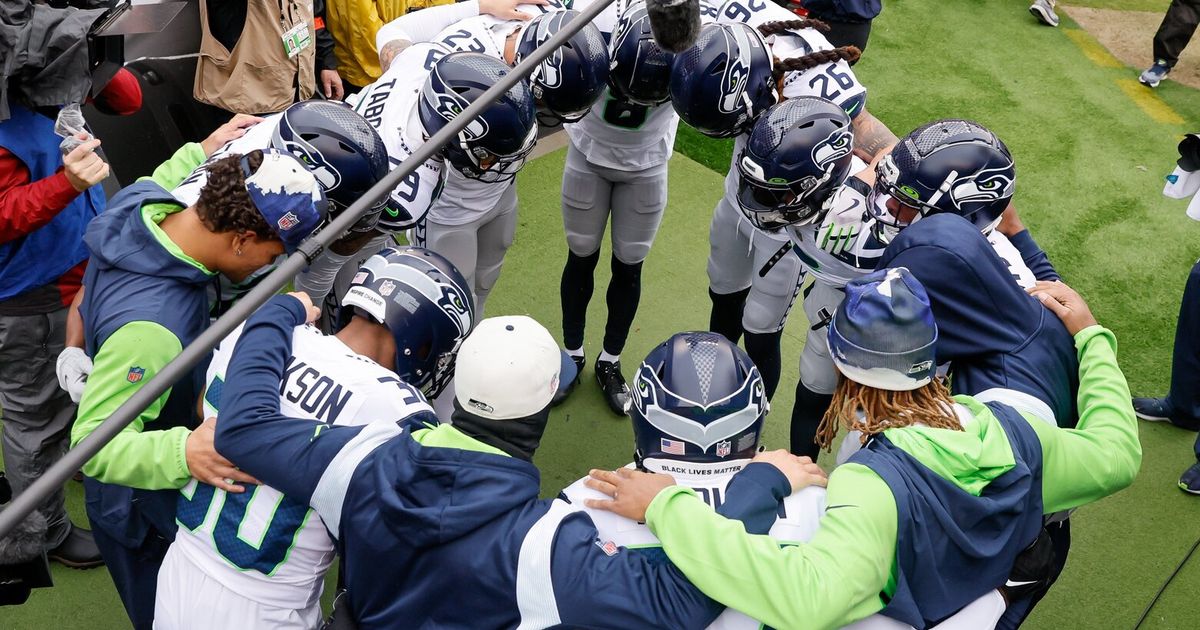
The NFL free agent season is almost here, with players able to begin negotiating with other teams on March 13.
And as that frenzied time arrives, the league’s players association — the NFLPA — has produced its inaugural guide for pending free agents grading all 32 franchises on features such as the quality of weight rooms, locker rooms and training staffs, food service and nutrition, how teams take care of player’s families and travel.
The purpose of the guide, the NFLPA stated, is to “not only help (players) make important career decisions, but also help raise standards around the league.”
The grades were produced via what the NFLPA said was a survey of more 1,300 players.
The good news for the Seahawks?
They graded out well overall, standing 11th in aggregate grade and getting grades of B-plus or better in six of the eight categories.
Specifically, the Seahawks received A-minuses for their locker room, weight room and strength staff and B-pluses for their training staff, treatment of families and food service/nutrition.
The locker room was particularly well-regarded with the NFLPA reporting that 100% of players “feel like they have enough space,” the highest mark for that question in the league. And Seattle’s B-plus grade for treatment of families ranked tie for fifth.
The bad news? A C grade in team travel, tied for 21st overall, which helped bring the overall grade down some.
Seattle also received a B-minus for the training room.
Concluded the NFLPA: “The Seattle Seahawks ranked 11th in the team guide. The club scored well in most of the areas reviewed with the most positive feedback resulting from a nice facility with plenty of space. The Seahawks have a very nice locker room, a good weight room and earned positive reviews on their cafeteria.
“There are just two areas where player respondents believe that they lag compared with most of the league: staffing their training room and team travel. In short, there is a desire to have more staff support player training and recovery, and also improve on making travel more comfortable for players, as they are one of only seven teams that do not offer players first class flights — the only exception being after road victories.
“With the facility scoring well, it is no surprise that 93% of players believe Seahawks ownership is willing to invest money in upgrading the facilities.”
The NFLPA specifically stated four reasons for Seattle’s travel grade, one of which was a positive — no roommates on the road.
But three others were cited as reasons for a C grade, one of which the Seahawks can’t do much about.
“Seahawks almost always rank high in miles traveled for games during the season,” the report stated.
Indeed they do.
This year, thanks in part to a trip to Germany, the Seahawks traveled almost 10,000 miles more than any other NFL team — 37,016 — which the Seahawks stated in their press notes is more than a trip around the world, estimated at 25,000 miles. Denver, which also played a game in London this year, was second at 27,398.
The Seahawks noted frankly in their media guide notes this year: “Tucked away in the Northwest, Seattle takes a while to reach via air travel, especially traveling east to west.”
But as noted, the other two reasons for the low travel grade are related to something the team could control, that the Seahawks are one of only seven teams “that do not offer first-class seats to players” with the NFLPA stating that first-class seats are available “only after some road victories.”
The Seahawks have famously held out sitting in first class as an incentive for a win on the road, with veterans taking the first-class seats of coaches and team execs for the trip home, something that dates to the middle of Pete Carroll’s tenure.
“I don’t know what I like more: the good part of the players getting moved up or how much the coaches are pissed about having to move back,” Carroll told reporters in 2019 about the tradition of players switching into coaches’ first-class seats after wins. “That’s a good tradition. I love sitting in the second class.”
As for the B-minus grade for the training room, it actually ranked 12th overall, seeming to indicate that players around the league think training rooms can use some overall improvement.
One specific reason cited for bringing down Seattle’s training room grade was that only 82% of respondents feel the Seahawks have enough ATCs, or certified athletic trainers, which the report said was the ninth-worst percentage in the league.
Seattle also ranked low in players feeling there is enough hot tub and cold tub space — just 61% of players feel Seattle has enough hot sub space, 24th in the league, and 79% feel there is enough cold tub space, 16th in the league.
High grades in the report, though, didn’t necessarily mean a winning team — the Super Bowl champion Kansas City Chiefs came in at 29 overall due to older facilities, low marks for the training staff and an F in team travel with players with “very few first-class seats” and being one of only six teams requiring young players to have roommates on the road; and the Super Bowl runner-up Eagles were 14th, due in part to their being no room for families of players at the stadium and also not offering first-class seats to players on flights.
Getting the five best grades were Minnesota, Miami, Las Vegas Houston and Dallas. The five worst, from the bottom, were Washington, Arizona, Los Angeles Chargers, Kansas City and Jacksonville.